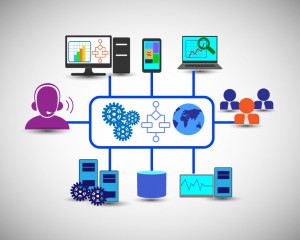Data is a powerful tool. Using results drawn from data can give you the confidence and backing to make more effective business tactics and ultimately changes. This can apply to call center data.
 How to measure call center success
How to measure call center success
Typical methods
Many call centers can provide basic feedback about calls such as call durations and percent of resolutions. Talkdesk.com also describes how the speed of an answer and overall abandonment rate are also important factors for a call center to follow.
These data are of course essential, but not necessarily helpful when it comes to creating an action plan to change a negative pattern appearing in the data.
For instance, you may discover that your overall call abandonment rate is high. Obviously, something needs to change, but you do not have any clues indicating where to start.
Atypical, but critical
Analyzing a wide range of data at once can provide deeper insights. Many call centers cannot analyze data that comes from multiple agents at once and provide recurrent patterns from that in real-time.
For example, Customer Elation account managers can find out if the same complaint was received 50 times, from 50 customers around the country, by 50 different agents.
Most call centers only look at data from individual agents, as if they operate on their own. Comparing big data across agents and customers can help solve problems quicker by determining if an issue stems from a particular agent, or if there is a deeper issue at hand to be addressed.
Analyzing big data can also help find general trends and characteristics about individual groups. This is imperative if you want your company to make a lasting impression.
Talkdesk.com describes how you can discover caller traits such as which age groups prefer to be addressed in what way, and what times of day they typically call. To an outsider, this data may seem useless – why would we want to know what someone prefers to be called and when they will call? In reality, this is extremely beneficial when it comes to offering personalized attention and can make or break customer loyalty.
If customers feel as if they are treated respectfully from the moment the phone is answered, they will be more likely to stay on the line and overall customer satisfaction will increase.
Benefits of being data-driven
Better agents
As Transerainc.com details, by analyzing big data across multiple agents over time, you can see which agents are most effective at their job and which provide the best customer service. This can help you create the most well-equipped and successful call center team.
Predictability
Using trends from past data can help you predict and prevent negative outcomes in the future. Customer behavior can be anticipated and planned for.
For example, if your analytics show that there is often a surge in callers around mid-day seeking an answer to a specific question, this will allow you to increase the amount of agents working at that time who are qualified to answer that type of question.
Customer satisfaction
Using data to find out what customers want and what questions they typically have is only beneficial for your business. Your fundamental goal as a business is to take action to increase customer satisfaction. This can be greatly aided by data that in turn increases customer loyalty, referrals, and ultimately sales.
